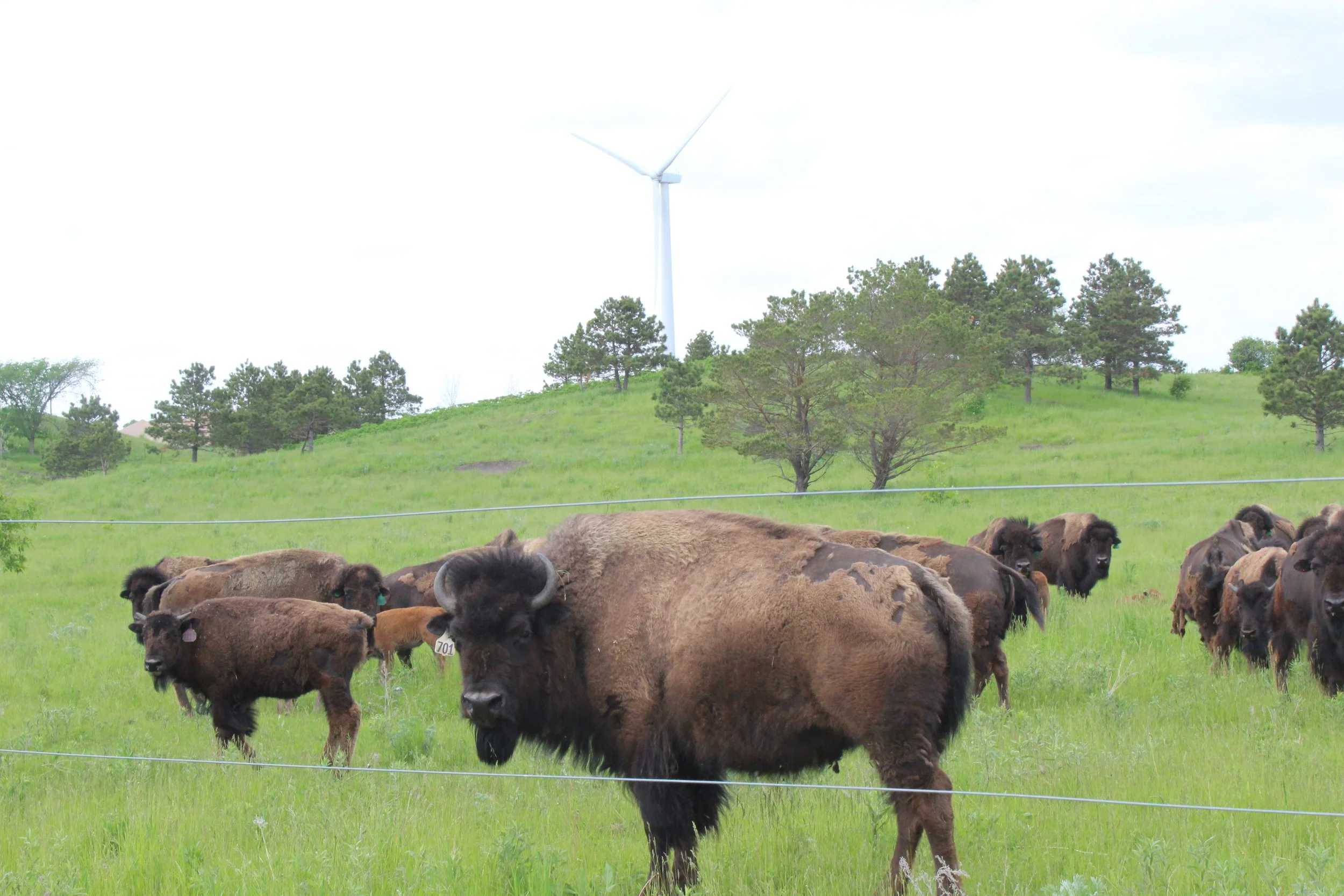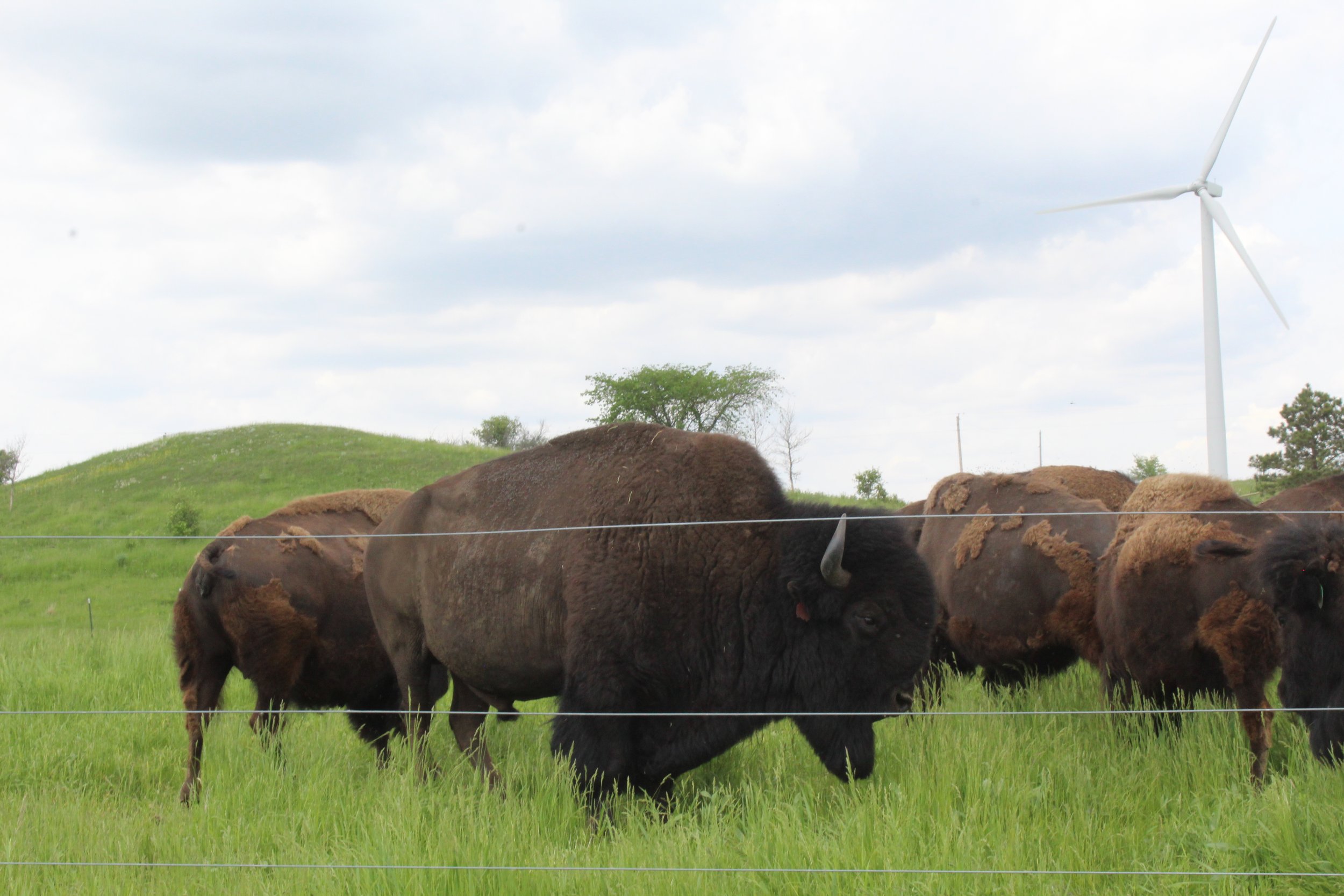Make Locally Raised Bison for Dinner
Rolling R Ranch…the beginning
Dale and Beth Rengstorf were teachers, but their background in farming seemed to call them. The two returned to Pelican Rapids to fulfill the dream, but the struggles were real.
“I was raising feeder pigs and in the middle of winter, as I was doing chores against a horrible wind, I went inside,” Dale recalls. “I was rubbing my face and hands to warm them up and said, ‘This land isn’t good for anything, but buffalo.’”
Those were prophetic words for the two who, a few years later, got 13 head if bison and liked what they were experiencing with the animals.
Bison are grazers and forage for their food. They can live outdoors year round and adapt well to the weather conditions. And, when it’s calving time, they require little if any assistance.
Dale continued to grow his bison herd and saw a need to market the meat. That’s where the Rengstorf’s daughter, Karla, and her husband, PJ enter the picture. The younger couple was living on the East Coast where PJ was a contractor. They moved to Minnesota to work with the bison and head Breen enterprises which markets bison through Otter Tail 23 Meats. Customers can order whole, half or quarters. All the meat is processed by Heart O’Lakes Processing in Pelican Rapids, a USDA inspected plant. Individual cuts of bison are also sold through Manna Food Co-Op in Detroit Lakes and Larry’s Supermarket in Pelican Rapids.
Today their Rolling R Ranch is home to more than 700 animals who live on 1,600 acres. Of those herd numbers, about 250 are breeding stock. All are rotationally grazed. There are eight paddocks with the herd divided into about six groups of 150 animals. Each group grazes on 240 acres of pasture.
What’s different about bison meat?
Bison meat has a sweeter flavor and is a very lean meat. It has less fat, in fact, than skinless chicken, PJ says.
While the body shape may be different than beef animals, the meat cuts are the same for both.
It’s best when slow cooked and should be a bit pink inside.
On marketing…
Karla and PJ Breen
“We have had people reach out to us from Michigan, but we ask them to check with their local bison producers,” Karla said. “We want people to be more aware of what is around them and support those producers. It’s better for the planet.”
But really, is it bison or buffalo?
To be accurate, the correct term for the breed is bison. The two are anatomically different, PJ says. Somehow the word buffalo was mentioned in the old west and stuck.
Dale helped start the Minnesota Bison Association which, at its onset, was named the Minnesota Buffalo Association. When knowledge of the species name became known, Minnesota and many other state organizations changed the name to bison.
I don’t foresee changing Buffalo Bill to Bison Bill. Yep. Don’t think that will ever be a thing nor should it, but now you know…
Bison are descendants from Europe and found in North America.
The species has adopted well to live in this northern climate. As PJ says they manage nicely in Minnesota weather be it 100 degrees in July or -40 degrees in January.
And, while they are “ranched” bison at the Rolling R, they are not domesticated. A five-strand fence of both electric fencing and barbed wire keep the stock in their paddocks.
They live their lives on pasture with little interference from the Breens or Rengsdorfs. The cows breed once a year and calve in the pastures starting in late April through most of May.
While beef breeders may strive for 100 pound calves at birth, the bison calves are usually around 35 to 40 pounds. The smaller calves are easier for the bison cows to birth.
The herd is rounded up in the fall when it goes through the corral system. Every animal is vaccinated and the calves and yearlings are weaned. Each animal in the herd is assessed for health at that time.
But the Breens and Rengstorfs monitor the herd’s health on their regular trips to the paddocks as they make sure the stock has plenty of water and needs are met.
Bison are never treated with growth hormones and only receive antibiotics if they are sick or injured. The “hands-off” approach allows the bison to live in as natural a state as possible, PJ said.
An eco friendly breed
As mentioned before, bison are grazers and pretty self-sufficient. Rolling R does supplement feed, but, for the most part, these animals do a good job of utilizing the grasses.
The pasture land is leased from a gravel company. The company will remove the topsoil, harvest the gravel, then replace the topsoil once the gravel is removed. This is not prime farmland and it would be difficult to grow a crop, but it’s perfect for grass and the grazing bison.
The Bison calve around April and May, PJ said. Calves weight between 35 to 50 pounds. While a beef producer might be happy with a 100 pound calf, the lighter bison calves allow for an easy birth.
“The cows have little if any problems birthing,” he said.
It takes 24 to 30 months for calves to reach market weight. The carcass size is comparable to beef, but it takes twice as long for bison to reach market weight.
Check out Rolling R Ranch on Facebook and breenenterprises.com on the web.








